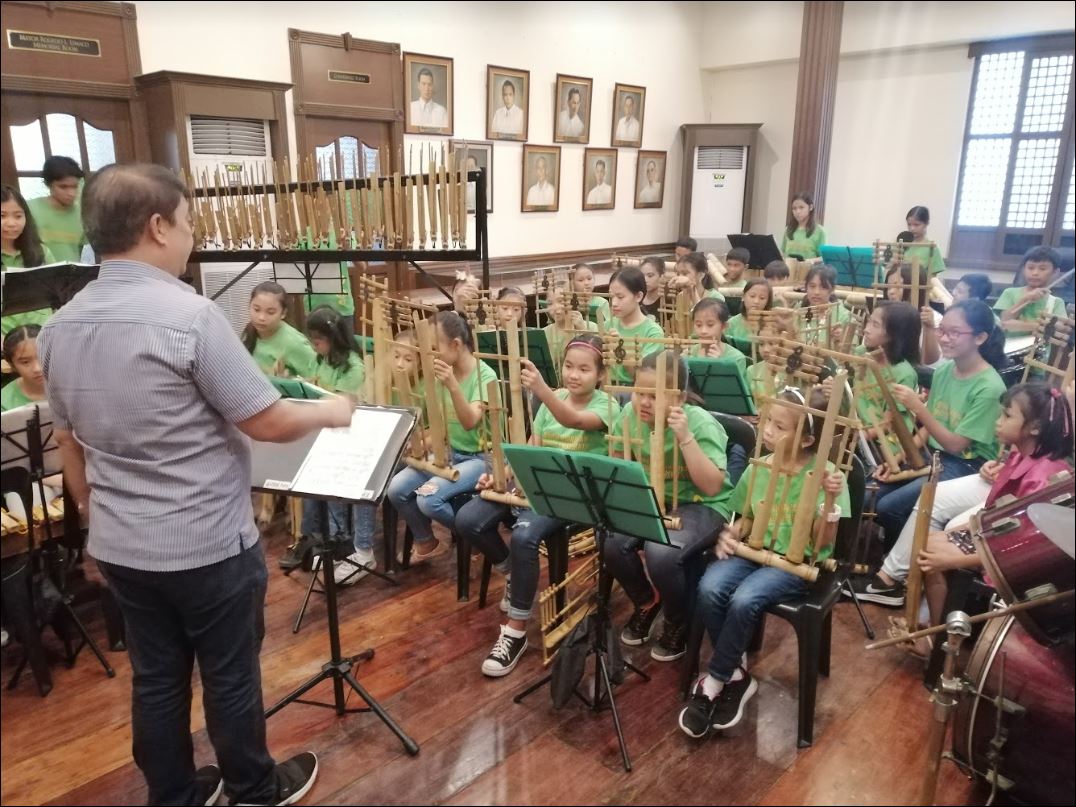Filipino bamboo musical instruments given new life by UP-PNU-DOST collaboration
By: Angie Quadra-Balibay
|
Published on: October 8, 2019

A member of the Musikawayan plays the Tipangklung. Credits to DoST.
Filipino bamboo musical instruments are being given new life through a collaborative program that seeks to develop new technologies to improve the quality of locally-made instruments.
The Bamboo Musical Instruments (BMI) Innovation Research and Development Program, set up with funding from the Department of Science and Technology – Forest Products Research and Development Institute (DOST-FPRDI), has partnered with the University of the Philippines (UP) – Center for Ethnomusicology and the Philippine Normal University (PNU) to help the bamboo music industry in the country.
“The DOST-FPRDI program aims to provide science-backed solutions to BMI problems on sound and structural qualities, playability, tuning and durability,” said Program Leader Aralyn L. Quintos in a media release sent to Good News Pilipinas.
The BMI program has 5 objectives:
- to prolong the life of bamboo without negatively affecting the musical instruments’ sound quality;
- standardize the production of selected BMI;
- develop prototype design;
- analyze raw material sources and existing markets;
- build a BMI processing facility.
“As an off-shoot, we hope to raise public awareness and appreciation for the cultural importance of these musical instruments,” Quintos added.
The best-known bamboo musical instrument in the Philippines is the Bamboo Organ of Las Piñas, a Philippine National Treasure housed at the St. Joseph Parish Church. The Spanish colonial bamboo organ is composed of 1,031 pipes, 902 of which are made out of bamboo while the rest are metal. Built in the 19th century, the Bamboo Organ continues to function with an annual festival in its honor that draws worldwide travelers to south of Manila every February.
Bamboo musical instruments have also played a key role during the 1896 Philippine revolution against the Spanish colonizers. Malabon Musikong Bumbong helped the Katipunan by hauling and sneaking away their weapons. It also played the revolutionary songs “Alerta Katipunan” and “Veteranos dela Revolucion”, notes the DOST report.

Gilbert Ramos conducts the Musikawayan and trains the Binan Kawayan Music Ensemble. Credits to DoST.
The great grandson of Felix Ramos, one of the founders of Malabon Musikong Bumbong, has continued to work with bamboo musical instruments played by an orchestra, the Musikawayan.
Ret. Col. Gilbert Ramos is the conductor and musical director of Musikawayan, who also trains members of the Binan Kawayan Music Ensemble.
“We make various types of instruments such as tipangklung, angklung, marimba, bumbong, bamban and gabbang, mostly for our clients from schools and music stores,” shared Ramos.
He admits that though there is a steady demand for their products, one of the challenges is maintaining the quality of the raw materials, especially since bamboo poles are usually prone to bukbok (powderpost beetle) attack. This is where the BMI program can help.
Bamboo has been a regular fixture in Philippine cultural performances such as in the dance of the Tinikling, a folk dance which recently caught the attention of netizens for being performed in a debutante’s cotillion dance.
Filipino innovations using the bamboo include the Loudbasstard sound amplifier, the Green Falcon Banatti electric bamboo motorcycle, and the bamboo bike.
SEND well wishes in the comments below to the teams of users, makers, and innovators of bamboo musical instruments for enhancing local craftsmanship!
Like, Follow, Subscribe to GoodNewsPilipinas.com Facebook, Twitter, Instagram, Good News Pilipinas! TV on YouTube, new story notifications and e-mail newsletters for updates on more Filipino Pride stories.

